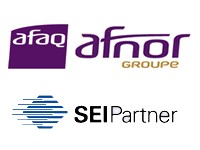CMMI Benefits have been experienced by all types of software organizations in the world and the benefits achieved are well documented and researched. Here we give you a synopsis of the subject.
Capability Maturity Model Integration – Benchmarking our Processes:
CMMI standing for Capability Maturity Model Integration is the structured collection of software engineering best practices that has been published by the Software Engineering Institute (SEI) of Carnegie Mellon University (CMU) located at Pittsburgh, USA. CMMI® is the registered trademark of SEI, CMU, USA.
Published Reports of Benefits of CMMI:
As per the research conducted by SEI – a very large number of organizations, small, medium and large – using different types of development methodologies – from conventional to agile and extreme programming – have benefited by implementing the CMMI specific and generic practices. Information about CMMI benefits is available in the August 2006 SEI technical report, Performance Results of CMMI-Based Process Improvement (CMU/SEI-2006-TR-004). This report on the benefits of CMMI is based on public reports, interviews, supplementary materials, and comprehensive literature review. It is available on the SEI Web site at: http://www.sei.cmu.edu/publications/documents/06.reports/06tr004.html.
Positive Impact of CMMI on Organizational Performance Parameters:
It is an established fact that by using the CMMI Model Framework implementation, the organizations have gained in the following areas:
- Cost
- Schedule
- Productivity
- Quality
- Customer Satisfaction
- Return on Investment
For more information on the performance results, see the CMMI Performance Results Web site at: http://www.sei.cmu.edu/cmmi/results.html.
How Do You Want to Work?
As some point in time, when organizations are busy to establish them in the market and looking at a next level of accomplishment after achieving the base-line level, they definitely reflect and introspect the fundamental question: How do they want to work?.
They have to evaluate the options:
- Without CMMI: do organizations work with Random motion – lots of energy, not much progress, No teamwork – individual effort, high frequency of conflicts and ultimately not knowing where organizations are going to end up.
- With CMMI: Organizations work with – Directed motion – every step bringing you closer to the goal, Coordinated efforts, Cooperation and Predictable results.
Examples of CMMI Benefits:
A quick extract from the above-mentioned reports give us information about the following benefits achieved from CMMI Implementation:
Example of CMMI Benefits: Schedule
- 50% reduction in release of turn-around time (Boeing, Australia)
- Increased the percentage of milestones met from approximately 50% to approximately 95% percent (General Motors)
- Decreased the average numbers of days late from approximately 50 to fewer than 10 (General Motors)
- Increased through-put resulting in more releases per year (JP Morgan Chase)
- Met every milestone (25 in a row) on time, with high quality and customer satisfaction (Northrop Grumman Defense Enterprise Systems)
Example of CMMI Benefits: Productivity
- Improved productivity substantially, with “Significantly more rigorous engineering practices due to CMMI (Fort Still Fire Support Software Engineering Centre)
- Improved software productivity (including reuse) from a 1992 baseline by approximately 80 percent at SW-CMM® maturity Level 5 1997 to over 140 percent at CMMI ML 5 in 2001 (Lockheed Martin Systems Integration)
- 25 Percent productivity improvement in 3 years (Siemens Information Systems Ltd, India)
Examples of CMMI Benefits: Quality
- Used Measurement & Analysis to realize an 11 percent increase in productivity, corresponding to $ 4.4M in additional value (reported under non-disclosure)
- Reduced software defects per million delivered SLOC by over 50 percent compared to defects prior to CMMI. (Lockheed Martin Systems Integration)
- Reduced defects rate at CMMI ML5 approximately one third compared to performance at SW-CMM ML5. (Lockheed Martin Maritime Systems & Sensors Undersea Systems)
- Improved defect removal before test from 50 percent 70 percent, leaving 0.35 post release defects per KLOC. (Siemens Information Systems Ltd., India)
- 44 percent defect reduction following causal analysis cycle at maturity level 2 (reported under non-disclosure)
Example of Impacts: ROI
- 5:1 ROI for quality activities (Accenture)
- 13:1 ROI calculated as defects avoided per hour spent in training and defect prevention (Northrop Grumman Defense Enterprise Systems)
- Avoided US $ 3.72 million in costs due to better cost performance (Raytheon North Texas Software Engineering)
- 2:1 ROI over 3 years (Siemens Information Systems Ltd, India)
- 2.5:1 ROI over 1st Year, with benefits amortized over less than 6 months (reported under non-disclosure)


